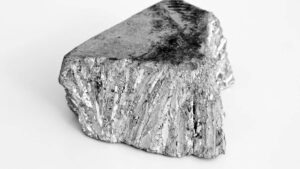‘This is a remarkable project – and the market is missing it’

Pic: Bloomberg Creative / Bloomberg Creative Photos via Getty Images
Special Report: $3m market cap Variscan Mines (ASX:VAR) believes the historic high-grade Novales-Udias mine in Cantabria, northern Spain, is a true near-term production opportunity. But that’s just the start.
Last year’s acquisition of two advanced zinc projects in Spain — Novales-Udias and Guajaraz – was a gamechanger for Variscan.
Both Novales-Udias and Guajaraz include former producing mines that neighbour even larger mines in the region.
The historic Reocín deposit is one of the largest known zinc-lead deposits in Europe.
Variscan says priority #1 is the mothballed Novales underground mine, which represents a near-term redevelopment opportunity. Here miners were hitting large, high-grade ‘ore bags’ grading between 15 and 35 per cent zinc up until closure in 1997.
Anything above 12 per cent is generally considered high grade.
Variscan was recently able to negotiate access to a very large, very valuable historical drilling archive covering the old underground mine and the surrounding region.
“We’ve put together 18,000m worth of surface drilling and nearly 10,000m of underground drilling so far – so that’s 30,000m worth of historic drilling which is worth more than the company’s market cap,” managing director Stewart Dickson told Stockhead.
And there’s more results to come.
“We have the former mine manager and former shift leader of the mining teams telling us that they were mining high-grade ‘ore bags’ in this deposit running at over 15 per cent zinc,” Dickson says.
“These historic intersections prove that those claims are not unfounded. They believe there are still some of those ore bags remaining, and that our job is to prove them up.”
Variscan is moving very quickly, doing exactly what it said it would — advancing Novales towards an early development decision, Dickson says.
“This historic data is going to significantly advance our ability to model [the remaining] resource, drill it out to JORC standards by Q3, and then bring it into production quickly,” he says.
And remember, this mine was last running when prices were two to three times lower than they are in 2020.

“The key message is that this is a remarkable project — and the market is missing it,” Dickson says.
Uncovering Reocín 2.0
This old data is also validating and enhancing the large exploration package around the former mine as well.
This is a brownfields project with greenfields upside, Dickson says.
“Reocín is one of the largest grade tonnage operations that has ever existed,” he says. “We are 9km away on ground that is unexplored by modern standards.”

The ground is dotted with small scale workings, mined by old timers who really only scooped the ore off the surface. Deeper down is where the opportunity lies for Variscan.
“We are seeing an opportunity to find Reocín Mark 2,” Dickson says.
“When I look at the depth of historic surface drilling, I see mineralised intercepts at depth below these workings.
“My view is that there is potential to link those former workings together along strike and chase the [high-grade ore] at depth.”
NOW READ: What does 2020 hold for the less popular — but still very useful — zinc?
This story was developed in collaboration with Variscan Mines, a Stockhead advertiser at the time of publishing.
This story does not constitute financial product advice. You should consider obtaining independent advice before making any financial decisions.
Related Topics
UNLOCK INSIGHTS
Discover the untold stories of emerging ASX stocks.
Daily news and expert analysis, it's free to subscribe.
By proceeding, you confirm you understand that we handle personal information in accordance with our Privacy Policy.








